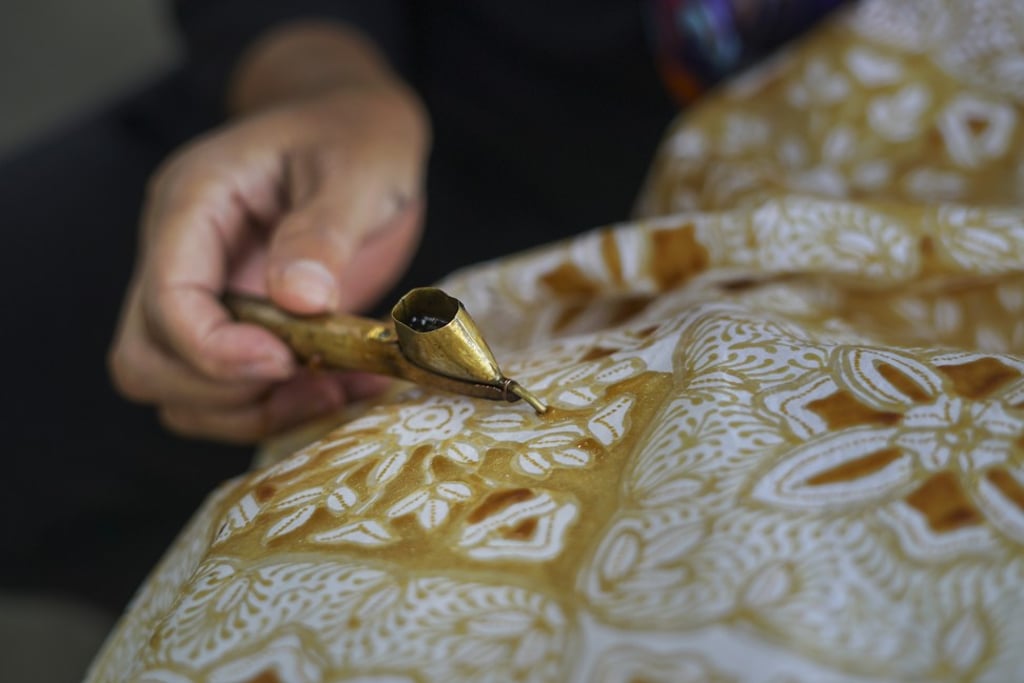Hand-made batik artisans in Indonesia preserve tradition and teach tourists their cloth-making secrets
- Women hand-draw on white cloth motifs passed down for centuries from the royal court of Yogyakarta, using hot wax to sketch patterns with scenes of nature
- Inscribed on the Unesco list of intangible cultural heritage, batik making is taught to villagers in childhood, and now also to local and foreign visitors

It is early morning in Giriloyo, Yogyakarta, and a group of women are busy drawing motifs on white cloth in an open gazebo. Next to them are buckets of liquid wax that they will melt on a small stove and use to draw intricately detailed patterns filled with flowers and birds.
These artisans are making batik, cloth for which Indonesia is famous, using a wax-resist dyeing technique known as batik tulis.
Batik is made in various parts of Indonesia, each of which uses unique motifs, but the artisans in Giriloyo are among a minority that produce the cloth entirely by hand, using the same techniques and motifs as their forebears.
The area in central Java has developed not only as a centre for batik making, but for teaching the art of batik to tourists.

One of the women at work in Giriloyo is Imaroh, 51, who has been making batik since she was 10 years old. Like her, most women in her village learn how to make the cloth in childhood and continue making it into old age, she says. “I am the third generation of my family to make batik. My daughter is now also making batik,” Imaroh says.